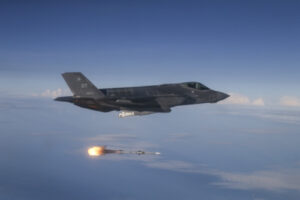Helicopter News
-
HN for Wed., Oct. 14, 2015
- Army Moving Forward on Apache Multiyear Contract
- Sikorsky To Pause Flight Test Of S-97 Raider To Collect More Ground Test Data
- Chinook Block 2 RFP Coming Early Next Year
- Boeing Bullish On Rotorcraft Business Following India Deal
- Army Would See Modest Increase In Vehicle, Aviation Upgrades Under NDAA
- Spain Requests $243 Million In MQ-9 Block 5 Aircraft
-
 Uncategorized
UncategorizedSpain Requests $243 Million In MQ-9 Block 5 Aircraft
The State Department approved a possible $243 million Foreign Military Sale (FMS) request to Spain for four MQ-9 Block 5 Aircraft and associated equipment, parts, and logistical support. The Defense […]
-
 Uncategorized
UncategorizedArmy Would See Modest Increase In Vehicle, Aviation Upgrades Under NDAA
The National Defense Authorization Act, as agreed upon by both House and Senate armed service committees, would increase the Army’s combat vehicle procurement account by $400 million over the president’s […]
-
 Uncategorized
UncategorizedBoeing Bullish On Rotorcraft Business Following India Deal
Having inked a deal with India for dozens of AH-64 Apache attack and CH-47 Chinook heavy-lift utility helicopters, Boeing [BA] is confident that its military rotorcraft production lines will be […]
-
 Uncategorized
UncategorizedChinook Block 2 RFP Coming Early Next Year
The Army plans to release a request for proposals early next year for CH-47F Block 2, which will allow the service to operate the helicopter more affordably as it ages—an […]
-
 Uncategorized
UncategorizedSikorsky To Pause Flight Test Of S-97 Raider To Collect More Ground Test Data
Sikorsky [UTX] has paused flight testing on its experimental coaxial-rotor S-97 Raider to focus on operation of its ground-test station. The first S-97, which incorporates dual rotors and an aft […]
-
 Uncategorized
UncategorizedArmy Moving Forward on Apache Multiyear Contract
The Army is aiming to ink a multiyear contract with Boeing [BA] for AH-64E Apaches and expects approval from Defense Secretary Ashton Carter in March 2016, program officials said on […]
-
HN for Wed., Sept. 30, 2015
- Marines Wading Through Audacious Aviation Transition
- U.S. Approves Lockheed Martin Acquisition of Sikorsky
- Continuing Resolution Would Have Little Effect on Army’s ITEP Program
- India Orders Apache and Chinook Helicopters From Boeing
- Airbus Helicopters Names Executive Director For Corporate and VIP Sales
- United Kingdom Awards $36 Million In Contracts For Unmanned Aerial Systems As Core Defense Capability
-
 Uncategorized
UncategorizedUnited Kingdom Awards $36 Million In Contracts For Unmanned Aerial Systems As Core Defense Capability
The United Kingdom Ministry of Defence awarded two contracts worth nearly $36 million for two small unmanned aerial systems (UAS) to bring them into the military’s core equipment program, the […]
-
 Uncategorized
UncategorizedAirbus Helicopters Names Executive Director For Corporate and VIP Sales
Airbus Helicopters named Ralph Crosby III as executive director of corporate and VIP sales, the company said Sept. 29. Crosby, reporting to senior director of marketing Doug Carriger, will lead […]
